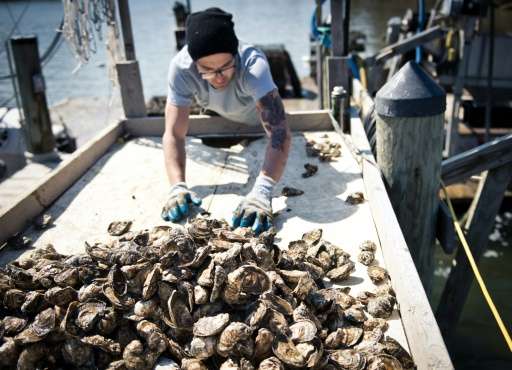Oysters, like these seen on March 20, 2014 from the Chesapeake Bay near Hollywood, Maryland, "readly ingest" microplastics since they are similar in size to phytoplankton which they typically consume
Tiny bits of plastic that pollute the world's waters may also interfere with oysters' ability to reproduce and thrive, according to a study Monday by researchers in France and Belgium.
The damage happens quickly, according to the findings of a study using Pacific oysters that were kept in tanks.
Those exposed to microplastics made smaller eggs and sperm that was less mobile compared to a control group of oysters whose tank did not contain added microplastics.
After just two months of exposure to plastic pollution, oysters produced "41 percent fewer offspring, which also grew at lower rates," said the study in the Proceedings of the National Academy of Sciences, a peer-reviewed US journal.
Since microplastics are similar in size to the phytoplankton that oysters typically consume, the bivalves "readily ingested" the particles, said the study.
The ocean is polluted each year with between four and 12 million tons of plastic from cosmetics, clothing, industry and improper waste management, according to background information in the article.
Since plastic cannot decompose like organic waste, it breaks down into tiny particles the size of a millimeter or less.
"Given their ubiquitous nature and small dimensions, the ingestion and impact of microplastics on marine life are a cause for concern," said the study.
More information: Oyster reproduction is affected by exposure to polystyrene microplastics, Proceedings of the National Academy of Sciences, www.pnas.org/cgi/doi/10.1073/pnas.1519019113
Journal information: Proceedings of the National Academy of Sciences
© 2016 AFP























